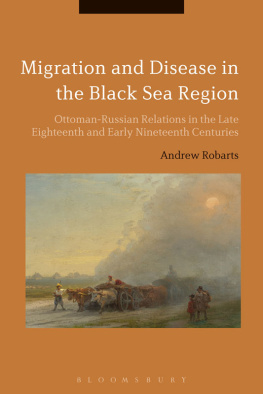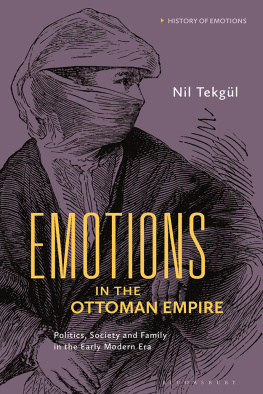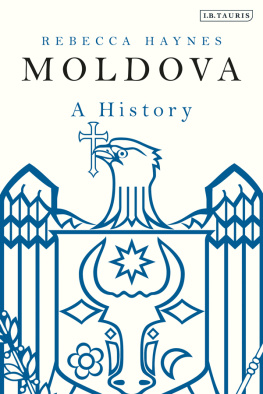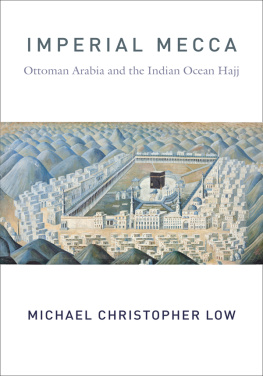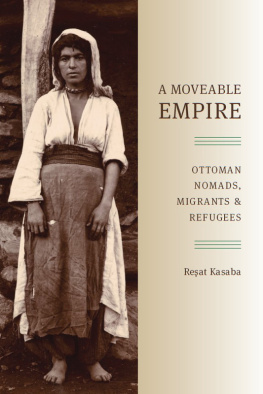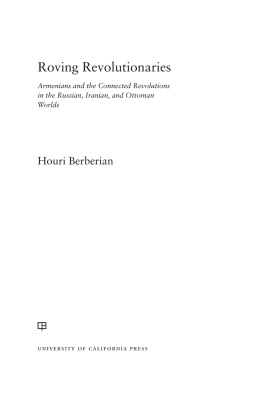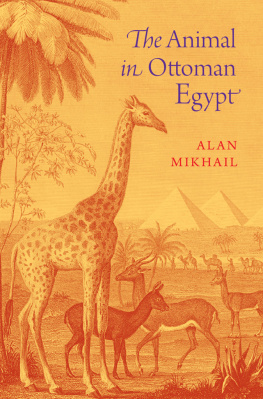Migration and Disease
in the Black Sea Region
Migration and Disease
in the Black Sea Region
Ottoman-Russian Relations
in the Late Eighteenth and Early
Nineteenth Centuries
Andrew Robarts
Bloomsbury Academic
An imprint of Bloomsbury Publishing Plc

This book is the culmination of many years of study and research, in both the United States and abroad. I have incurred many debts and made many new friends along the way. At Georgetown University, I would like to thank, first and foremost, Professor Catherine Evtuhov. For over two decades now, Professor Evtuhov has been a consistent source of support, encouragement, and intellectual guidance. Professor Gabor Agoston shepherded me through the pitfalls attendant with the study of the multifaceted Ottoman Empire. Professors John McNeill and Charles King made sure that I maintained a broad analytical frame and drove my intellectual inquiries into the fields of world and regional history.
In Bulgaria, I would like to thank Professor Alexei Kalionski of Sofia University who proved to be a great listener and a valuable source of advice on Ottoman, Russian, and Bulgarian history. The archival and research staffs at the Bulgarski Istoricheski Arkhiv of the Narodna BibliotekaKiril i Metodi and at the Tsentralen Durzhaven Arkhiv were consistently helpful and supportive of my research project. In Moscow, my appreciation goes to the staff of the Gosudarstvennyi Arkhiv Rossiiskoi Federatsii and Rossiiskii Gosudarstvennyi Voenno-Istoricheskii Arkhiv for their professionalism. Special thanks go to the very kind and helpful staff in the academic reading room of the Gosudarstvennaia Istoricheskaia Publichnaia Biblioteka.
In Turkey, Kahraman akul and Gnhan Breki accompanied me during my initial forays into Istanbuls archives and libraries. Im quite convinced that their introductions to key staff members in these research institutions lent instant credibility to my research project. Thank you both. My thanks as well go to the staff of the Babakanlk Osmanl Arivi and Islam Aratrmalar Merkezi. The latter institution always provided a quiet, calm, and cool environment on chaotic and steamy summer days in Istanbul. Along these lines, it was my pleasure to stay at the American Research Institute in Turkey (ARIT) in Arnavutky for several months in 2008. Although my stay in Odessa was far too brief, Lilia Belousova made sure that my time in the Odessa State Archives was as collegial and productive as possible. The lengths she went to during my short and intense research visit to Odessa will always be appreciated.
Many institutions and organizations supported me financially during the research and writing phases of this project. My thanks go to the Graduate School at Georgetown, the Department of History at Georgetown, the American Council of Learned Societies (ACLS), the American Research Institute in Turkey (ARIT), the Social Sciences Research Council (SSRC), the International Research & Exchanges Board (IREX), Foreign Language and Area Studies (FLAS) grants, the Institute of Turkish Studies (ITS), and the Cosmos Club Foundation for their generous financial support.
During the journeyman phase of my academic career, I had the great pleasure of working and teaching at the University of California, Riverside, and Central Connecticut State University. At UCR, I am particularly thankful for the collegiality and consistent support provided by Professors Georg Michels and James Brennan. AT CCSU, Kathy Hermes served as a mentor and friend. Thank you Kathy. I would like to offer my deepest gratitude as well to my colleagues at the Rhode Island School of Design.
Finally, my familyalthough occasionally perplexed as to why I was investing so much time researching and writing on the Black Sea region offered unconditional support and maintained an unwavering faith in my academic pursuits. My mother and father (Dee and Richard Robarts) instilled in me, from an early age, a passion for history and a desire to explore the world. My brother, Alex, and my little daughter, Claire, helped me keep things real. And finally, and most importantly, to my wife, Amy, thank you for your patience, for wading through the early drafts of this book, and for your unfailing belief in me. I made it.

Map 1 Map of the Black Sea region.

Map 2 Cities, towns, and political divisions in the Black Sea region (late eighteenth and early nineteenth centuries).

Map 3 Map of Turkey and southern Russia.
In late July 1805, the Russian nobleman Ivan Ivanovich Veshniakov, aboard a Greek merchant ship and traveling under the protection of a ferman issued by the Ottoman Sultan Selim III, sailed up the Dardanelles and across the northern shore of the Sea of Marmara toward Istanbul. Fighting countervailing headwinds, Veshniakovs shipfilled with fellow Orthodox Christian pilgrims as well as Tatars returning from the Muslim pilgrimage (hajj) to Mecca and Medinadocked in the Galata district of Istanbul. After settling in his quarters, Veshniakov immediately proceeded to the Russian embassy in Istanbul to meet with a Russian consular official, Councilor of State Froding. In this meeting, Veshniakovjoined by a Volga Tatar Hajji named Ismailprovided Froding with information on his travels in the Ottoman Empire. Striking up a conversation with Ismail, the Russian nobleman and the Volga Tatar swapped stories of their respective pilgrimages.
Following a two-week stay in the capital of the Ottoman Empire, on August 5 Veshniakov boarded a Greek merchant ship bound for Odessa. After being delayed five days in Istanbul due to an unfavorably strong northern wind, a shift of winds to the south resulted in what Veshniakov described as a regatta-like departure of merchant ships from Istanbul headed for various Russian Black Sea ports. Despite the wind shift, the southerly wind was not strong enough to counter currents in the Bosporus, and Veshniakovs vessel was forced to dock first in Dolmabahe and then in Arnavutky. Finally, on August 15, the Greek merchant ship departed Istanbul and sailed into the Black Sea. Following a coastal route up the western (Balkan) Black Sea shore, the ship reached Odessa in two days.
Just outside Odessa, the Greek merchant ship was stopped and boarded by Russian maritime officials. Following a brief inspection of the ships passengers, the ship was turned away from Odessas docks and was ordered to proceed to the ports quarantine station located some distance from the
The Black Sea region and regional history
The Black Sea region of 1768 to 1829 has traditionally been characterized as a theater of warfare and imperial competition. Indeed, during this period, the Ottoman and Russian empires engaged in four armed conflicts for supremacy in the Balkans, Caucasus, and on the Black Sea itself. The experiences of individuals such as Ivan Ivanovich Veshniakov, however, provide an alternative perspective from which to analyze the history of the Black Sea region. In the late eighteenth and early nineteenth centuries, the Black Sea region was a zone of exchangeof trade, populations, and diseasesbetween the Ottoman and Russian empires. While not discounting geostrategic and ideological confrontation between the Ottoman and Russian empires, this book emphasizes the transimperial character of Ottoman-Russian relations in the Black Sea region during this period.
Next page
